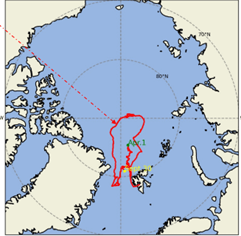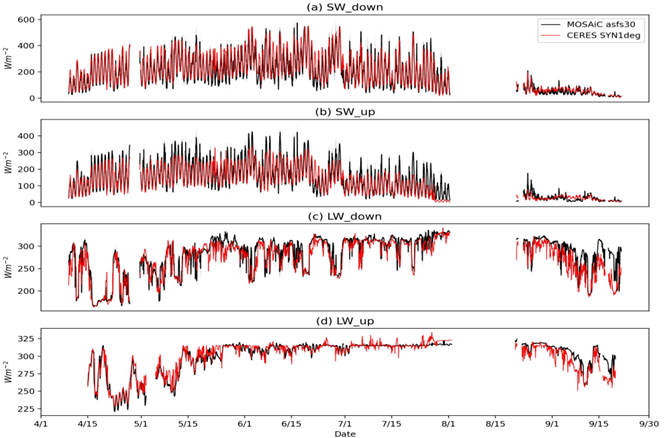Comparison irradiation above sea ice of CERES and MOSAiC
On the 8th of October in 2021, Y. Huang, P. C. Taylor, F. G. Rose and D. A. Rutan conducted a study concerning the uncertainty of the NASA Clouds and Earth’s Radiant Energy System. This system, otherwise known as CERES, provides satellite-based observations of earths incoming and emitted radiation. The goal of this study was to represent the surface albedo of earth more realistically. The recorded CERES values were compared to values of the MOSAiC field campaign. The MOSAiC expedition of 2019 has taken a close look at the arctic as the epicenter of global warming. All MOSAiC measurements were done by using Hukseflux solar radiation sensors such as the SR30 pyranometer and IR20 pyrgeometer.
Irradiance uncertainty sea ice
The CERES-derived irradiances have the largest uncertainty above sea ice. Mainly the heterogeneity in surface conditions and the difficulty of distinguishing clouds from ice are reasons for the uncertainty of irradiances above sea ice.
The MOSAiC station locations and measurements of the atmosphere at heights of 2, 6, 10, and 24 meters are depicted in the images below.


One of the findings was that the CERES system constantly underestimates the surface albedo during summertime, compared to MOSAiC. The following image ranges from April 15th till September 15th.

Furthermore, all types of fluxes were compared independently, shown in the following image.

From these graphs, the upward shortwave radiation, ‘SW_up’, was deemed most uncertain. Logically this uncertainty results in the previously mentioned difference in albedo.
Correcting irradiance estimation
To minimize this underestimation, the researchers created a series of radiative transfer calculations. These corrections were able to decrease the upward shortwave flux uncertainty by 15% and decrease the downward flux uncertainty by 8%. Furthermore, the study concludes that 80% of the uncertainty of upward shortwave radiation is created by the ‘monthly surface albedo history (SAH)’ -bias. This bias emerges from the fact that the CERES-stations have different kinds of measuring equipment. Some stations function better on a day-to-day bases and others have a more accurate mean value over longer periods of time.
Original article:
“Towards a More Realistic Representation of Surface Albedo in NASA CERES Satellite Products: A Comparison with MOSAiC Field Campaign”







